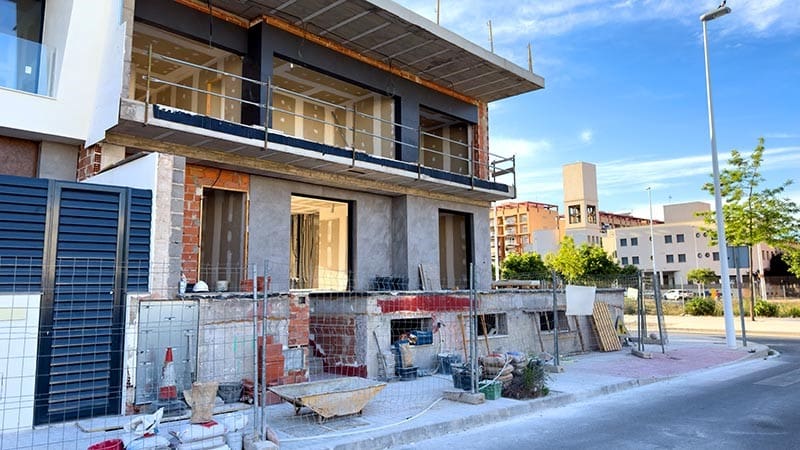- 25 Sep 2024
- By API Magazine

Weighing up whether to buy or build is a choice that comes with its own set of advantages and disadvantages, particularly in terms of financing options, ease of tenancy, location and capital growth, risk factors and tax benefits.
Now is a promising time to be a property investor in Australia.
Despite ongoing challenges in the industry, the property market has shown resilience. House values have risen by 8.3 per cent over the past year. Additionally, the number of residential listings is over 7 per cent higher than the five-year average and with the current imbalance between supply and demand for rental properties, there is a steady stream of tenants seeking housing.
For landlords who are in the position to grow their property portfolio, the challenge lies in deciding whether a new or second-hand property best suits their investment strategy.
Each option comes with its own set of advantages and disadvantages, particularly in terms of financing options, ease of tenancy, location and capital growth, risk factors and tax benefits. This article aims to provide a thorough analysis to help you make an informed investment decision.
Financing
Financing new properties can be more straightforward for new-build investors. Many developers offer attractive financing packages, including lower deposit requirements, extended payment terms and even interest-free periods during construction. New properties also require lower initial maintenance costs due to new construction.
A new build often requires a higher initial purchase price compared to similar second-hand properties, which offer more leverage for negotiations.
Financing second-hand properties might involve more traditional mortgage routes, which can vary based on the property’s age, condition and location.
Lenders may require a more detailed property inspection and valuation, potentially leading to higher interest rates or lower loan-to-value (LVR) ratios. A second-hand property also runs the risk of requiring higher initial maintenance and renovation costs.
Tenants
Attracting desirable tenants is easier when providing modern amenities, energy efficiency and overall appeal. High-quality finishes and contemporary designs can justify higher rental prices, making these properties attractive for higher-income tenants.
Setting higher rental prices on a new build may, however, reduce the number of potential tenants.
Established properties might require more effort to attract tenants, especially if the property is older or in need of renovations. A second-hand property might also generate lower rental income compared to new properties, which will impact the rental yield due to higher maintenance and renovation costs.
Location and capital growth
New properties in prime or emerging areas can offer significant capital growth potential, especially if the surrounding infrastructure and amenities develop as anticipated. However, the higher initial purchase price might limit immediate returns and new properties in already saturated markets may see slower appreciation.
Older properties are often located in desirable, established neighbourhoods and offer a steady demand for rentals, however, if the property is in a less desirable or stagnant area, there is less potential for growth, so the location should be a key consideration.
While new properties offer higher potential capital growth, used properties in established areas typically offer more stable and predictable capital growth due to historic precedence. Second-hand properties also offer the potential for value addition through renovations and improvements.
Rental yield potential
For some property investors, the primary goal is ensuring the long-term capital growth of the investment property, while others focus on the rental yield and cash flow generated from the property.
New properties in prime or emerging locations can attract desirable high-income tenants and provide excellent rental yields, especially if the area undergoes rapid development. Proximity to amenities, public transport, and employment hubs can significantly impact rental demand and yield.
Though new builds offer the potential for high rental yields, second-hand properties in well-established locations typically offer consistent rental yields.
The stability of these areas can result in lower vacancy rates and steady rental income. If the property is in a state of disrepair with no updates or maintenance, the rental yield will also be impacted despite potentially being in a desirable location.
The decision between investing in a new or second-hand property ultimately depends on the investment strategy, risk tolerance, and financial standing.
New properties offer modern amenities, higher rental income potential, and significant capital growth in developing areas, but come with higher market risks and purchase prices.
Second-hand properties provide stability, lower market risks, and consistent rental income in established areas, albeit with higher maintenance costs and potentially lower rental yields.
Claiming depreciation
Both old and new properties offer potential depreciation deductions that can maximise the tax benefits on an investment property and enhance cash flow.
New properties typically provide significant building depreciation deductions under both Division 40 for plant and equipment, and Division 43 for capital works.
Even second-hand properties retain potential depreciation value.
If the current owner undertakes significant renovations or upgrades, not only can these enhance the property’s capital value and rental yield potential, but they may also qualify for property depreciation.
Investors may also qualify to claim depreciation on renovations and upgrades completed by previous owners.
Article Q&A
Is it better to buy an established property or build new?
Weighing up whether to buy or build is a choice that comes with its own set of advantages and disadvantages, particularly in terms of financing options, ease of tenancy, location and capital growth, risk factors and tax benefits.
